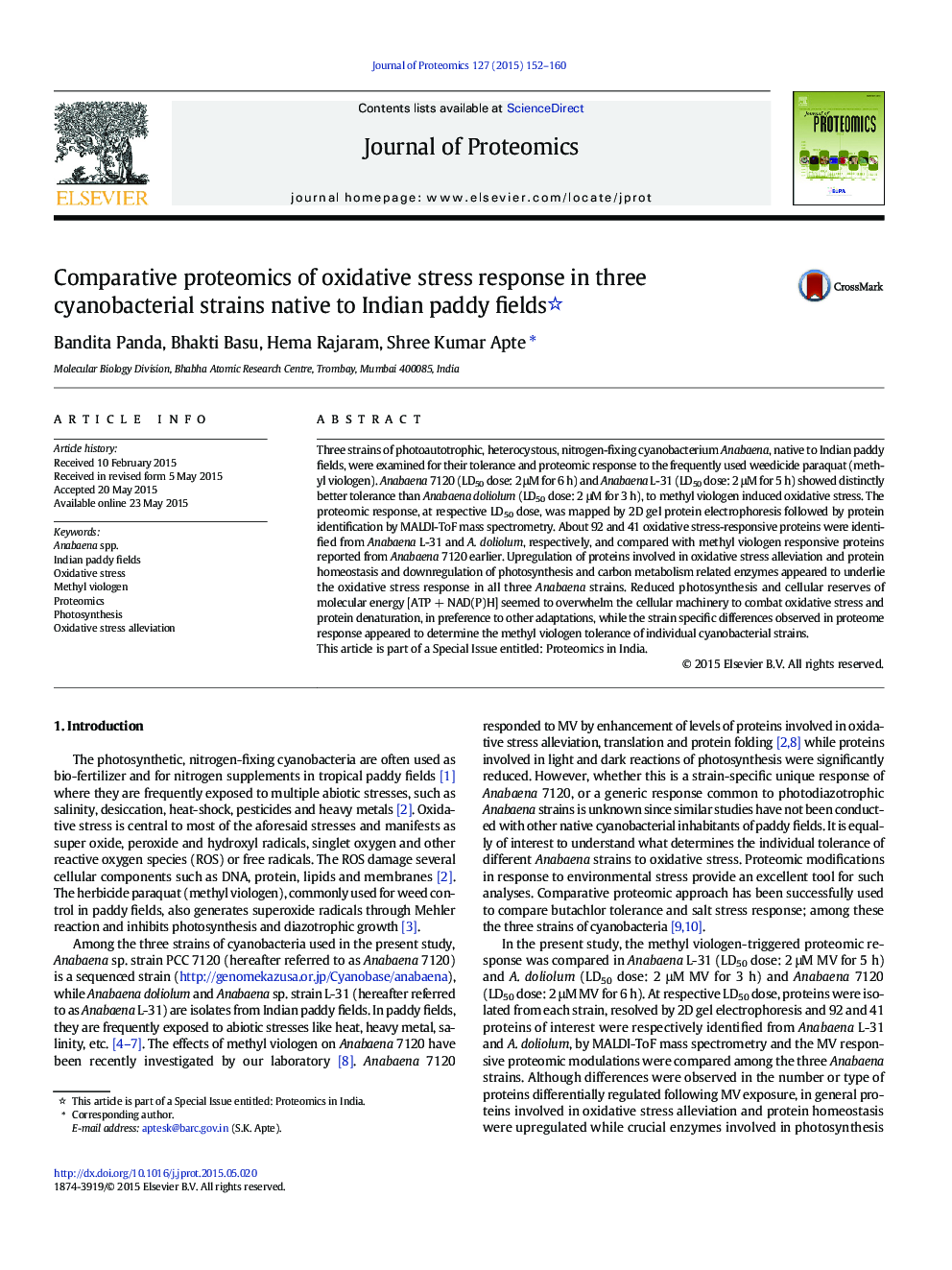| کد مقاله | کد نشریه | سال انتشار | مقاله انگلیسی | نسخه تمام متن |
|---|---|---|---|---|
| 1225322 | 968204 | 2015 | 9 صفحه PDF | دانلود رایگان |

Three strains of photoautotrophic, heterocystous, nitrogen-fixing cyanobacterium Anabaena, native to Indian paddy fields, were examined for their tolerance and proteomic response to the frequently used weedicide paraquat (methyl viologen). Anabaena 7120 (LD50 dose: 2 μM for 6 h) and Anabaena L-31 (LD50 dose: 2 μM for 5 h) showed distinctly better tolerance than Anabaena doliolum (LD50 dose: 2 μM for 3 h), to methyl viologen induced oxidative stress. The proteomic response, at respective LD50 dose, was mapped by 2D gel protein electrophoresis followed by protein identification by MALDI-ToF mass spectrometry. About 92 and 41 oxidative stress-responsive proteins were identified from Anabaena L-31 and A. doliolum, respectively, and compared with methyl viologen responsive proteins reported from Anabaena 7120 earlier. Upregulation of proteins involved in oxidative stress alleviation and protein homeostasis and downregulation of photosynthesis and carbon metabolism related enzymes appeared to underlie the oxidative stress response in all three Anabaena strains. Reduced photosynthesis and cellular reserves of molecular energy [ATP + NAD(P)H] seemed to overwhelm the cellular machinery to combat oxidative stress and protein denaturation, in preference to other adaptations, while the strain specific differences observed in proteome response appeared to determine the methyl viologen tolerance of individual cyanobacterial strains.This article is part of a Special Issue entitled: Proteomics in India.
Journal: Journal of Proteomics - Volume 127, Part A, 8 September 2015, Pages 152–160